From ‘It’s A Bodega!’ To 22K Square Feet, Grocery Store Footprint Expands For Key Food Site
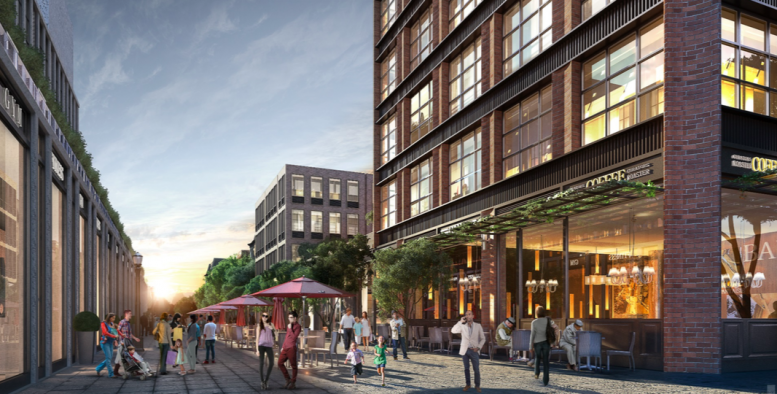
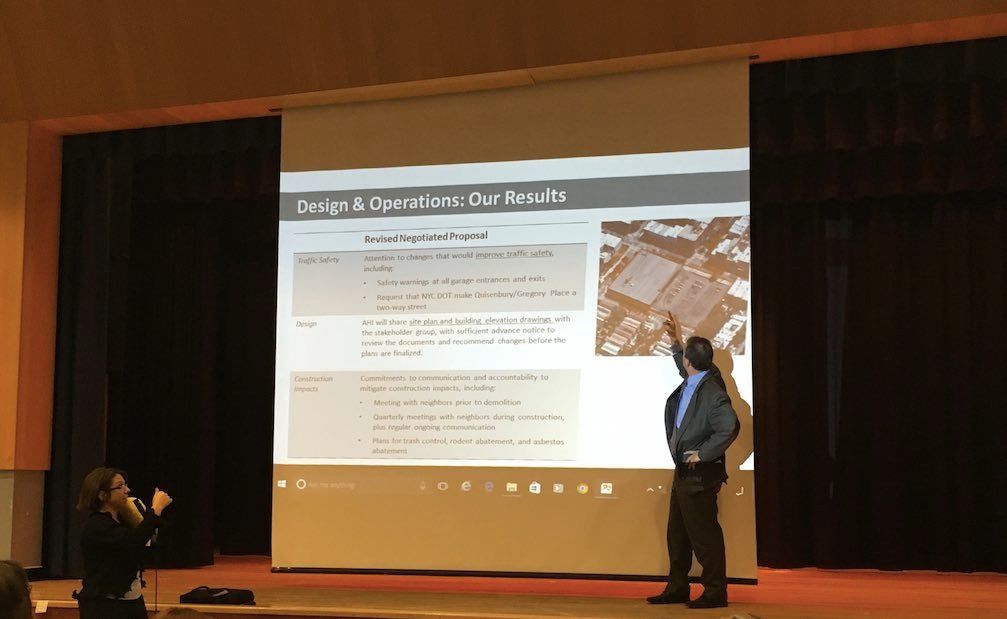
The night was about community consensus and square footage. And both increased significantly in the same room that had an extremely different tone and energy back in February.
Such is the impressive progression which has taken place over the last eight months after Avery Hall Investments (AHI), the property developer for the 5th Avenue Key Food site, presented preliminary plans for their new development. The grocery store space caused an outcry due to its allotted size of 7,500 square feet. The current Key Food is 30,000 square feet.
The crowded auditorium at PS 133 – William Butler School may not have been as stuffed as it was back in February, however, the attendees were eager to find out about the revised proposal which would be presented by the 5th Avenue Key Food Stakeholder Group.
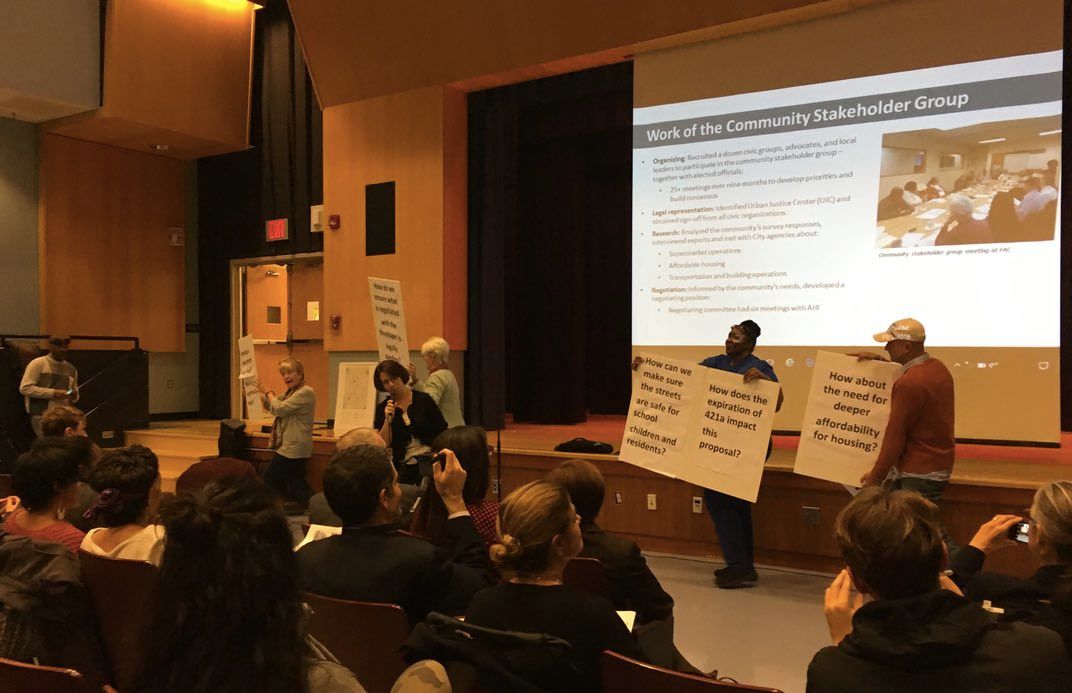
The stakeholder group — made of a wide cross-section of civic organizations and political leaders — spent eight months meeting and negotiating with AHI in an attempt to address community concerns that an affordable grocery store with healthy food options and wider aisles is essential to the community.
Michelle de la Uz, Executive Director of Fifth Avenue Committee explained the stakeholder group met a whopping 25 times to respond to community concerns, including 6 meetings with Avery Hall.
“We’re clear about our values of inclusion,” said de la Uz. “And we know the commercial spaces are part of that process.”
Revised Supermarket Parameters
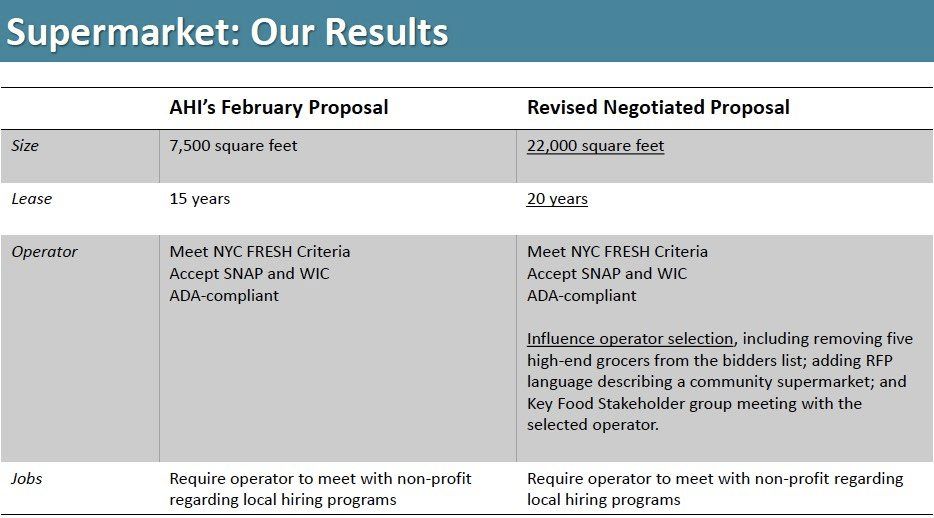
The revised negotiated proposal for a grocery space almost tripled in space to 22,000 square feet. In addition, the lease for the store jumped to 20 years instead of the original 15.
The current Key Food grocery store is 30,000 square feet.
Council Member Brad Lander pointed out that the developers didn’t plan on a grocery space at all when they first met with him. “I told Avery Hall that they needed to tell the public themselves,” he said. “They had to have a conversation with the community.”

In addition to the size of the grocery store, stakeholders came to an agreement with AHI that the store would carry “ethnic products”, fresh produce, and products which would range in price to satisfy the diverse community who regularly shop at the store.
The stakeholder also made clear that companies which sell high-end and expensive products — such as Whole Foods, Eataly, Citerella, and Balducci’s — would not be considered for the supermarket.
“This is really about human-scale development,” said Public Advocate Tish James, who used to live in the neighborhood and shop at Key Food.
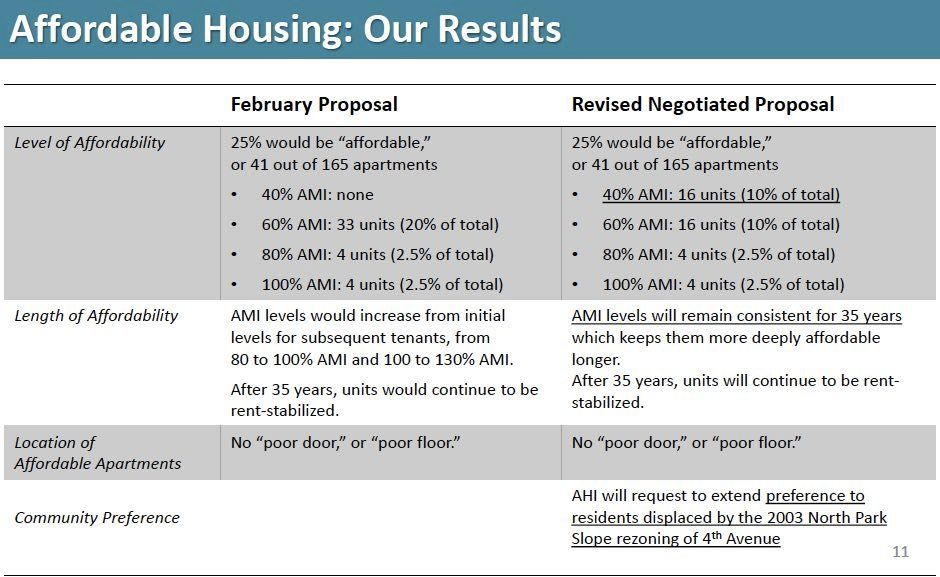
Revised Residential Parameters
The stakeholder group also negotiated with AHI to provide the availability for “long-term deeply affordable housing that serves local residents, including those who have been displaced from the neighborhood.”
AHI’s housing proposal in February provided for 41 affordable units out of 165 apartments, with 32 units for low-income families and eight for moderate-income families.
According to the revised proposal, those numbers have adjusted to provide more affordability. AHI will now agree to 16 “very low-income families” (households which make 30%-50% of the area’s median income), 16 for low-income families (households which make 50%-80% of the area’s median income), and eight units for moderate income families (households which make 80%-120% of the area’s median income).
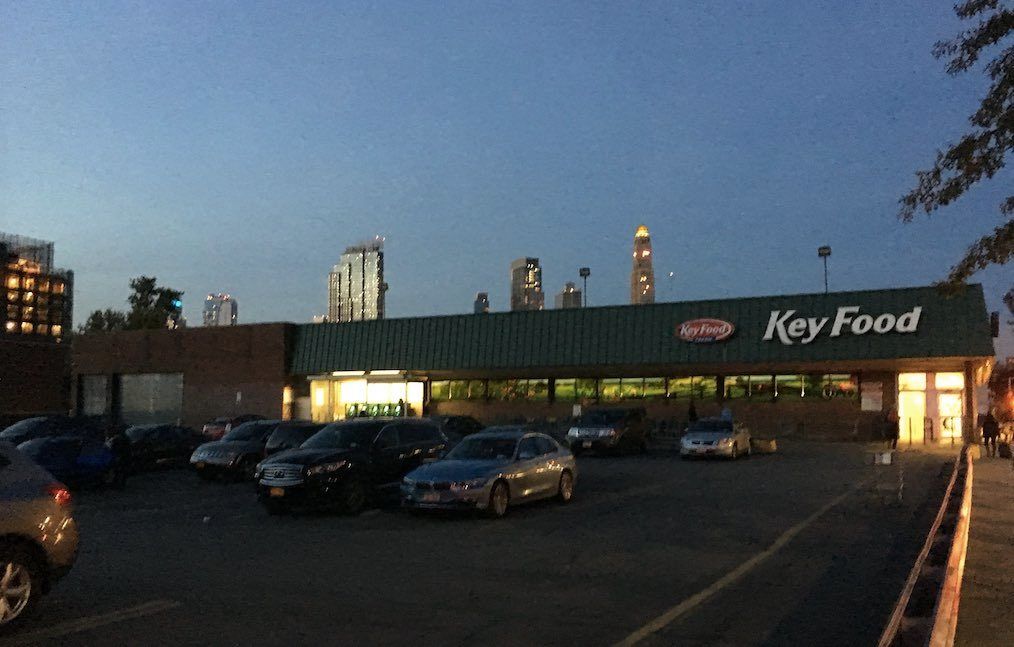
The Current Pickwick Key Food
The property at 120 5th Avenue has a rich history. According to the New York Times, Louis L. Rosenberg purchased the land in 1954 from the Roman Catholic Diocese of Brooklyn located on Butler Street. He subsequently developed an industrial building and leased it to the Knickerbocker Toy Company.
After the toy company left, the city planned to build a school, but the project never got off the ground. That was in the 1970s.
The Times writes that “after months of community controversy over the use of the site, the Department of Housing Preservation and Development advertised for redevelopment proposals for housing and a new supermarket.”
The original operator of the supermarket was Morris Levine, whose Pickwick Foods Company still owns the Key Food on 5th Avenue.
Lander said that Pickwick has not engaged in any discussions concerning the future of the property and that it’s unclear if the current Key Food will stay open until demolition of the building takes place.
Feedback, Response, and Next Steps
Community members who attended the meeting were asked to fill out a feedback form based on the revised proposal, including recommended supermarket operators.
The next step will be a presentation and hearing of the revised proposal by Community Board 6.
One significant issue concerning the project involves the 421a tax exemption, which AHI needs in order to move forward with the affordable housing plan.
Politicians and civic leaders continued to point out the need for developing consensus for the negotation and future of the project.
Congresswoman Nydia Velázquez agreed. “Hopefully we can give to Washington lessons of how to get things done.”
View and download the entire revised proposal here.




